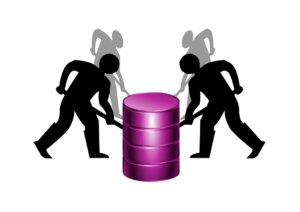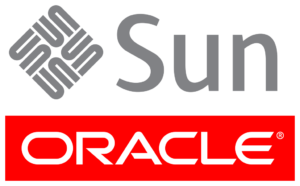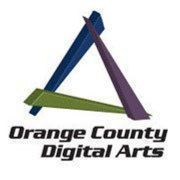Concept of data-mining
 The concept of data-mining first needs a basic understanding of what databases are and how we use databases in our everyday lives. Databases offer organizations the methods needed to store, manage, and efficiently retrieve information. “A database is an integrated collection of logically related data elements” (2009, O’Brien & Marakas, p.174). Databases consist of any number of tables. These database tables consist of columns and rows, just like excel tables. A database can be considered a collection of tables. It does not take much of a leap to go from an understanding of excel to database tables. Each row corresponds to a single record and each column represents a different attribute and in databases is referred to as a field. For example, we might have a database of names and phone numbers and the columns might be “FirstName”, “LastName”, and “TelephoneNumber”. Each row, or record, under the columns, or fields, would consist of the data planning to be stored. A database of 75 employees would consist of a table with 75 rows or records. Data may be logically organized into characters, fields, records, files, and databases, just as writing can be organized into letters, words, sentences, paragraphs, and documents (2009, O’Brien & Marakas, p.170). Data mining is used today primarily by companies with a strong customer focus. Extensive data aggregation is being done in order to make better decisions. Data mining is also called data mining. “One important characteristic about the data in a data warehouse is that, unlike a typical database in which changes can occur constantly, data in a data warehouse are static, which means that once the data are gathered up, formatted for storage, and stored in the data warehouse, they will never change” (2009, O’Brien & Marakas, p.192). Data warehouses are the areas in which data is pulled or mined in order to identify patterns which can then be evaluated and interpreted into business knowledge.
The concept of data-mining first needs a basic understanding of what databases are and how we use databases in our everyday lives. Databases offer organizations the methods needed to store, manage, and efficiently retrieve information. “A database is an integrated collection of logically related data elements” (2009, O’Brien & Marakas, p.174). Databases consist of any number of tables. These database tables consist of columns and rows, just like excel tables. A database can be considered a collection of tables. It does not take much of a leap to go from an understanding of excel to database tables. Each row corresponds to a single record and each column represents a different attribute and in databases is referred to as a field. For example, we might have a database of names and phone numbers and the columns might be “FirstName”, “LastName”, and “TelephoneNumber”. Each row, or record, under the columns, or fields, would consist of the data planning to be stored. A database of 75 employees would consist of a table with 75 rows or records. Data may be logically organized into characters, fields, records, files, and databases, just as writing can be organized into letters, words, sentences, paragraphs, and documents (2009, O’Brien & Marakas, p.170). Data mining is used today primarily by companies with a strong customer focus. Extensive data aggregation is being done in order to make better decisions. Data mining is also called data mining. “One important characteristic about the data in a data warehouse is that, unlike a typical database in which changes can occur constantly, data in a data warehouse are static, which means that once the data are gathered up, formatted for storage, and stored in the data warehouse, they will never change” (2009, O’Brien & Marakas, p.192). Data warehouses are the areas in which data is pulled or mined in order to identify patterns which can then be evaluated and interpreted into business knowledge.
Advanced software programs with algorithms and advanced methods of interpretational and mathematical procedures and statistical techniques are used to go through all the data and extract information that may have previously been unknown in terms of strategic business information. Data mining is used in many different ways. One way is to determine product bundles with a method called market-basket analysis. Other uses include identifying manufacturing problems and helping determine quality issues in the manufacturing process. A popular use for data mining is to help acquire new customers and prevent customer attrition as well as cross-selling to existing customers. profiling customers with greater accuracy is also a valid choice for data mining.
Oracle data mining 10gR2
 The Oracle in-Database Miner is a GUI interface to a software engine with a wide range of algorithms including anomaly detection, attribute importance, association rules, clustering, classification & regression, nonnegative matrix factorization, structured & unstructured data (text mining), and BLAST (Basic Logical Alignment Search Tool) which is a life sciences similarity search algorithm. Implementing BLAST will enable complex analytical pipelines within BLAST searches as well as allowing to subselect portions of the database using SQL, thereby restricting searches. The Oracle data mining 10gR2 also includes a spreadsheet add-in for predictive analytics, and a PL/SQL API & Java API for developing advanced analytical applications.
The Oracle in-Database Miner is a GUI interface to a software engine with a wide range of algorithms including anomaly detection, attribute importance, association rules, clustering, classification & regression, nonnegative matrix factorization, structured & unstructured data (text mining), and BLAST (Basic Logical Alignment Search Tool) which is a life sciences similarity search algorithm. Implementing BLAST will enable complex analytical pipelines within BLAST searches as well as allowing to subselect portions of the database using SQL, thereby restricting searches. The Oracle data mining 10gR2 also includes a spreadsheet add-in for predictive analytics, and a PL/SQL API & Java API for developing advanced analytical applications.
Oracle data mining provides a summary of statistical information prior to data mining. The GUI shows histograms and data summaries along with model performance and evaluation viewers. Graphical data helps users simplify activities and helps automate the data mining process.
An example of data mining is found in the use of decision trees. The problem is to find customers likely to buy a new car and to classify the profile of that person. The decision tree method within the data mining of the Oracle 10g R2 system for the automotive industry includes classification, prediction, and customer profiling. The following formula illustrates the process.
IF(Income >50KANDGender=FANDStatus >Single…), THENP(Buy Car=1)
in this example the result is a confidence level = .77 and support = 250.
Xerox data-mining
 The data mining process at Xerox involved a systematic series of steps that can be repeated as necessary. The process started with defining the problem and acquiring all the knowledge of the domain. Then the process moves to data and focuses on target data sets, data reprocessing, and data reduction. It is the assembling of relevant data sources and business processes and finding useful variables along with summarizing data with SQL. Then the process moves to the data mining task selection and the algorithm selection. This includes identifying clusters that describe behaviors and looking at which variables describe the problem as well as choosing statistical methods, decision trees, Bayesian nets, etc. Next in line is the data mining and the interpretation of results. The search for patterns and the discovering of knowledge occur within the data mining process and the explaining of mined patterns and quantifying of correlations begins. Rules can also be created. And finally, the deployment of knowledge occurs with tools and documentation, reports and proposals for business decisions and implementation, and the quantifying of benefits with rollout and feedback.
The data mining process at Xerox involved a systematic series of steps that can be repeated as necessary. The process started with defining the problem and acquiring all the knowledge of the domain. Then the process moves to data and focuses on target data sets, data reprocessing, and data reduction. It is the assembling of relevant data sources and business processes and finding useful variables along with summarizing data with SQL. Then the process moves to the data mining task selection and the algorithm selection. This includes identifying clusters that describe behaviors and looking at which variables describe the problem as well as choosing statistical methods, decision trees, Bayesian nets, etc. Next in line is the data mining and the interpretation of results. The search for patterns and the discovering of knowledge occur within the data mining process and the explaining of mined patterns and quantifying of correlations begins. Rules can also be created. And finally, the deployment of knowledge occurs with tools and documentation, reports and proposals for business decisions and implementation, and the quantifying of benefits with rollout and feedback.
Conclusion
The companies that will succeed and flourish in the 21st century are the companies that will understand data mining and how it is utilized. The reward of finding new things that matter can be immeasurable. Corporate and personal financial benefits can be realized through data mining.
References
Berger, C. (2006). Sr. Dir. Product Management, Life & Health Sciences Industry & Data Mining Technologies Oracle Corporation.
O’Brien, J.A. & Marakas, G.M. (2009). Management Information Systems. McGraw-Hill Irwin. 9th ed.
Thieret, T. (2006). Principal Scientist, Imaging and Systems Technology Center Xerox Innovation Group. Webster, New York.

 International study programs are considered to be eye opening experiences that let people from other countries experience new cultures and methods of instruction both in terms of education and interpersonal communication. The need in our world today is to be able to reach beyond our local environment to people across the seas and shed light on the mysteries we perceive deep within ourselves and others. We look across our oceans and say to ourselves, “I wonder what those people are really like over there?” International study programs give us the capability to work with people from other cultures and decide for ourselves what we think without excessive media manipulation. The best experience is first-hand experience. International communication is an extremely important component in the survival of us as people and with it we will be able to tear down the walls of discrimination and mystery and understand that essentially we are all the same. Nurturing the spirit of community with respect for all people of the world will help create peace and harmony on our planet. This is why programs such as the Beijing Connection are an important step forward in this direction. The video in this article is a compilation of images put together showing video students enjoying their experience here in Southern California.
International study programs are considered to be eye opening experiences that let people from other countries experience new cultures and methods of instruction both in terms of education and interpersonal communication. The need in our world today is to be able to reach beyond our local environment to people across the seas and shed light on the mysteries we perceive deep within ourselves and others. We look across our oceans and say to ourselves, “I wonder what those people are really like over there?” International study programs give us the capability to work with people from other cultures and decide for ourselves what we think without excessive media manipulation. The best experience is first-hand experience. International communication is an extremely important component in the survival of us as people and with it we will be able to tear down the walls of discrimination and mystery and understand that essentially we are all the same. Nurturing the spirit of community with respect for all people of the world will help create peace and harmony on our planet. This is why programs such as the Beijing Connection are an important step forward in this direction. The video in this article is a compilation of images put together showing video students enjoying their experience here in Southern California. We exist in the information age and we have been indulged in it quite some time now. We have more than information at our fingertips, we have information overload. Anything we need to know can be served up to us with a simple Google search. The key to extracting information from the internet becomes a task of knowing what the majority population would type into a search engine in order to obtain the information that meets the searchers requirements. Although this is a complex algorithm built by Google, it is very simplistic in the data it returns back to the user. Since we are considered to be in the information overload era the problem becomes one of sifting through all the plethora of information that we are bombarded with by the online content that is served to us by the search engines. This online content can steer us down rat holes where we become more and more saturated with irrelevant information. This is where the companies of tomorrow will succeed. By utilizing the technologies of things like relational databases and fuzzy logic the companies of tomorrow will be able to give the people the information they need quicker and with much higher levels of relevance. Let’s call this competitive advantage and these competitive advantages can be identified in specific strategic information systems. “A strategic information system can be any kind of information system (for example, TPS, MIS, and DSS) that uses information technology to help an organization gain a competitive advantage, reduce a competitive disadvantage, or meet other strategic enterprise objectives” (2009, O’Brien & Marakas, p.44).
We exist in the information age and we have been indulged in it quite some time now. We have more than information at our fingertips, we have information overload. Anything we need to know can be served up to us with a simple Google search. The key to extracting information from the internet becomes a task of knowing what the majority population would type into a search engine in order to obtain the information that meets the searchers requirements. Although this is a complex algorithm built by Google, it is very simplistic in the data it returns back to the user. Since we are considered to be in the information overload era the problem becomes one of sifting through all the plethora of information that we are bombarded with by the online content that is served to us by the search engines. This online content can steer us down rat holes where we become more and more saturated with irrelevant information. This is where the companies of tomorrow will succeed. By utilizing the technologies of things like relational databases and fuzzy logic the companies of tomorrow will be able to give the people the information they need quicker and with much higher levels of relevance. Let’s call this competitive advantage and these competitive advantages can be identified in specific strategic information systems. “A strategic information system can be any kind of information system (for example, TPS, MIS, and DSS) that uses information technology to help an organization gain a competitive advantage, reduce a competitive disadvantage, or meet other strategic enterprise objectives” (2009, O’Brien & Marakas, p.44). Businesses can use information technology to reduce the cost of business processes and the costs associated with customers and suppliers. An example of a case study for lowering costs is Amazon (
Businesses can use information technology to reduce the cost of business processes and the costs associated with customers and suppliers. An example of a case study for lowering costs is Amazon ( Jenni (
Jenni ( “The mid- to late 1990s saw the revolutionary emergence of enterprise resource planning (ERP) systems. This organization-specific form of a strategic information system integrates all facets of a firm, including its planning, manufacturing, sales, resource management, customer relations, inventory control, order tracking, financial management, human resources, and marketing—virtually every business function” (2009, O’Brien & Marakas, p.11). ERP is a system that has the ability to look across a company’s organizational functions and bring together the processes and information that help decision making and provides for higher levels of data sharing and collaboration.
“The mid- to late 1990s saw the revolutionary emergence of enterprise resource planning (ERP) systems. This organization-specific form of a strategic information system integrates all facets of a firm, including its planning, manufacturing, sales, resource management, customer relations, inventory control, order tracking, financial management, human resources, and marketing—virtually every business function” (2009, O’Brien & Marakas, p.11). ERP is a system that has the ability to look across a company’s organizational functions and bring together the processes and information that help decision making and provides for higher levels of data sharing and collaboration. The researcher is the president of
The researcher is the president of  After 2006, major advances have taken place in e-business. The main e-business initiatives are ICT user skills, ICT practitioner skills and e-business skills. These skills e have made the e-business operations of the organizations very efficient (Technology for Innovation / Information & Communication Technology Industries and E-Business, 2008). The ICT practitioner skills have advanced the designing, researching, integrating, installing and strategic planning in business. The ICT user skills provides tools of common software and specific business supporting tools for the improvement of e-business functioning. The E-business skills have provided several efficient and effective measures to improve the performance of e-business.
After 2006, major advances have taken place in e-business. The main e-business initiatives are ICT user skills, ICT practitioner skills and e-business skills. These skills e have made the e-business operations of the organizations very efficient (Technology for Innovation / Information & Communication Technology Industries and E-Business, 2008). The ICT practitioner skills have advanced the designing, researching, integrating, installing and strategic planning in business. The ICT user skills provides tools of common software and specific business supporting tools for the improvement of e-business functioning. The E-business skills have provided several efficient and effective measures to improve the performance of e-business. Back in 1965 Bruce Tuckman is to thank for the phases of team development we know as “forming, storming, norming, and performing”. A fifth stage was added later named “adjourning”.
Back in 1965 Bruce Tuckman is to thank for the phases of team development we know as “forming, storming, norming, and performing”. A fifth stage was added later named “adjourning”.